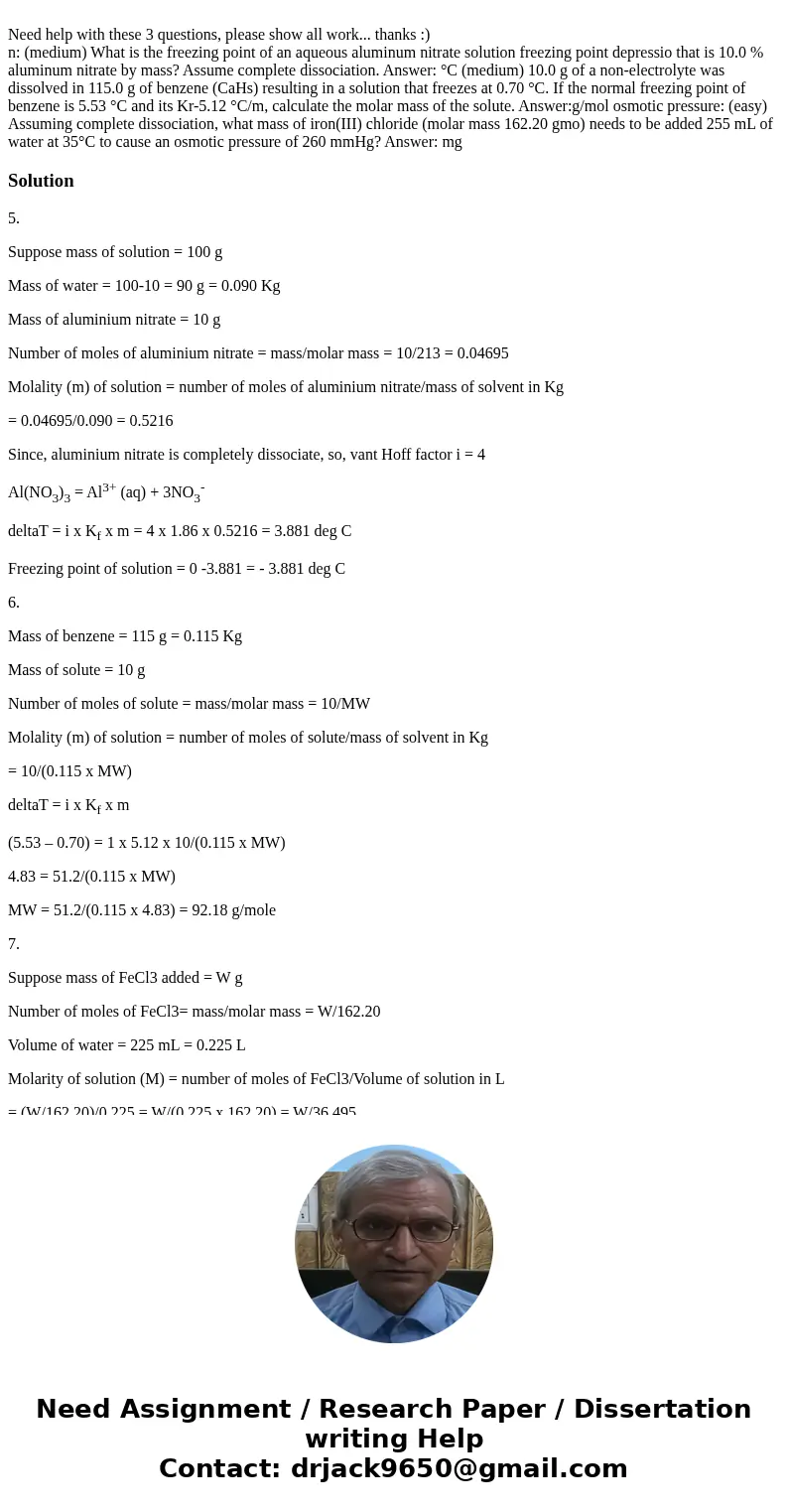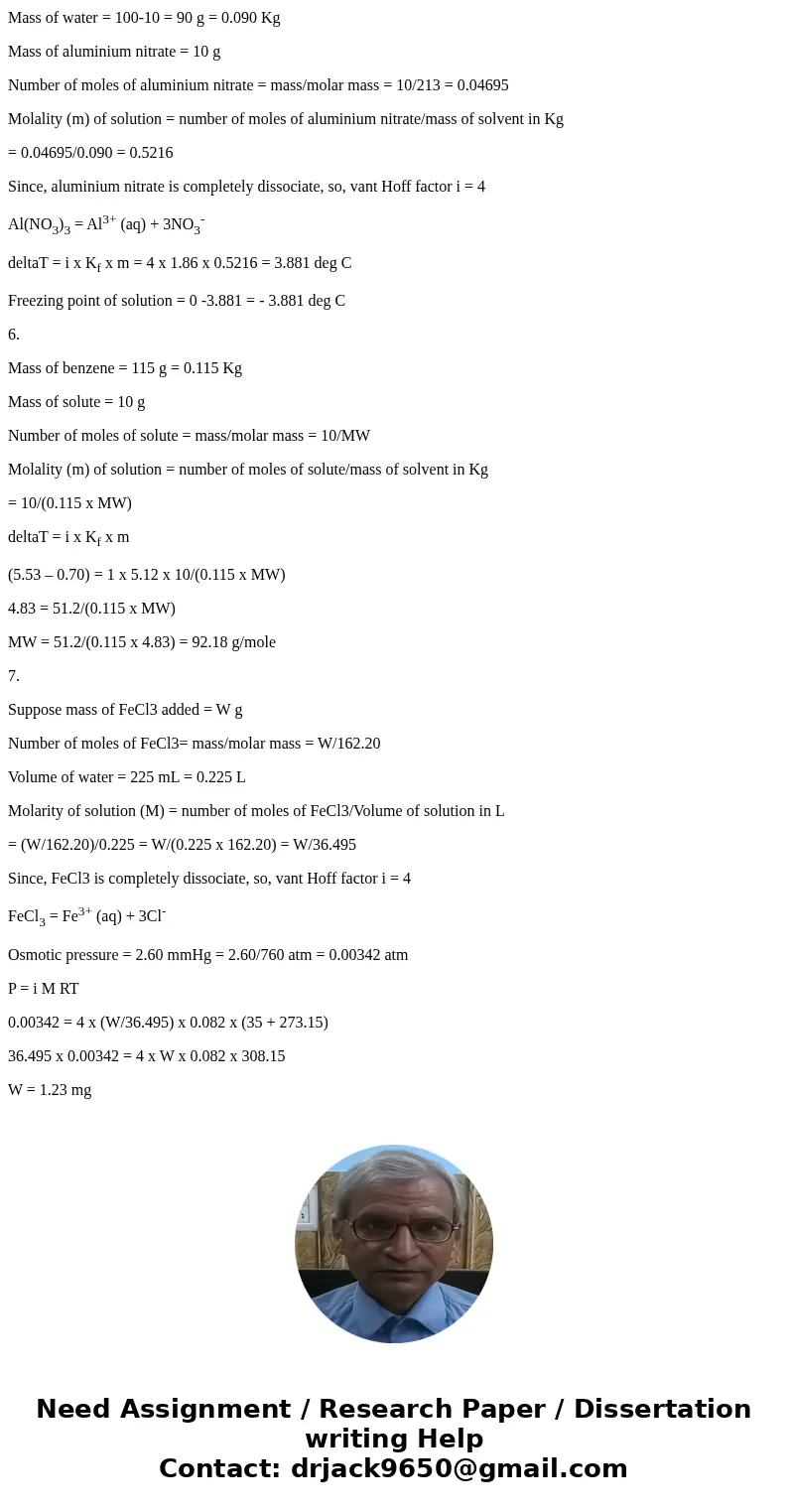Need help with these 3 questions please show all work thanks
Solution
5.
Suppose mass of solution = 100 g
Mass of water = 100-10 = 90 g = 0.090 Kg
Mass of aluminium nitrate = 10 g
Number of moles of aluminium nitrate = mass/molar mass = 10/213 = 0.04695
Molality (m) of solution = number of moles of aluminium nitrate/mass of solvent in Kg
= 0.04695/0.090 = 0.5216
Since, aluminium nitrate is completely dissociate, so, vant Hoff factor i = 4
Al(NO3)3 = Al3+ (aq) + 3NO3-
deltaT = i x Kf x m = 4 x 1.86 x 0.5216 = 3.881 deg C
Freezing point of solution = 0 -3.881 = - 3.881 deg C
6.
Mass of benzene = 115 g = 0.115 Kg
Mass of solute = 10 g
Number of moles of solute = mass/molar mass = 10/MW
Molality (m) of solution = number of moles of solute/mass of solvent in Kg
= 10/(0.115 x MW)
deltaT = i x Kf x m
(5.53 – 0.70) = 1 x 5.12 x 10/(0.115 x MW)
4.83 = 51.2/(0.115 x MW)
MW = 51.2/(0.115 x 4.83) = 92.18 g/mole
7.
Suppose mass of FeCl3 added = W g
Number of moles of FeCl3= mass/molar mass = W/162.20
Volume of water = 225 mL = 0.225 L
Molarity of solution (M) = number of moles of FeCl3/Volume of solution in L
= (W/162.20)/0.225 = W/(0.225 x 162.20) = W/36.495
Since, FeCl3 is completely dissociate, so, vant Hoff factor i = 4
FeCl3 = Fe3+ (aq) + 3Cl-
Osmotic pressure = 2.60 mmHg = 2.60/760 atm = 0.00342 atm
P = i M RT
0.00342 = 4 x (W/36.495) x 0.082 x (35 + 273.15)
36.495 x 0.00342 = 4 x W x 0.082 x 308.15
W = 1.23 mg


 Homework Sourse
Homework Sourse